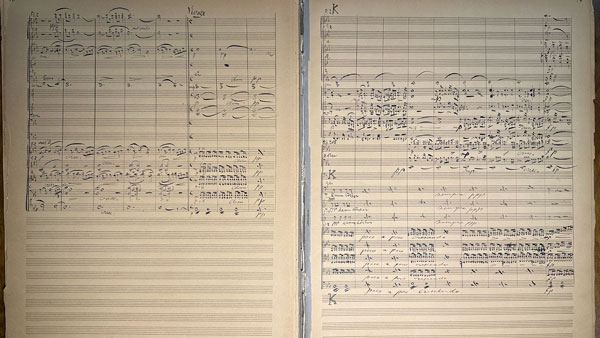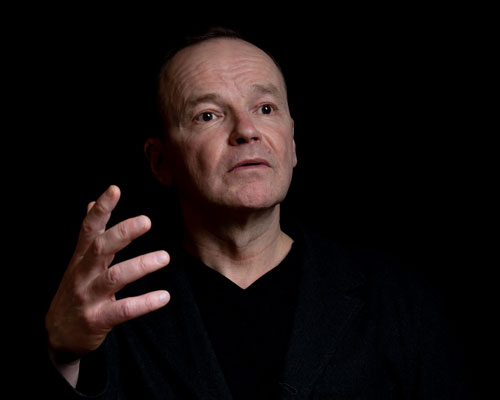
‘I’ll send you my Suite in a few days. It is revised, but for the concert hall. If it sounds good, you can do it in the Philharmonie. It’s eminently sellable, I think.’ Sibelius wrote this in November 1894, in a letter to his friend Adolf Paul in Berlin, referring to a hitherto unknown version of the Karelia Overture and Suite, which will be performed at the 2023 Helsinki Festival. The concert by the Helsinki Philharmonic Orchestra will be conducted by Tuomas Hannikainen, who identified the Sibelius score in the manuscript collections of the National Library of Finland in the spring of 2023.
The score was part of a donation to the National Library from the Finnish Broadcasting Company YLE in 2010, but its the early history is still unclear; it is undated but (not least on the basis of the letter to Paul) is believed to have been prepared in 1894. According to Hannikainen, the score appears to be a fair copy that could be sent to a publisher. Sibelius’s heirs have suggested that the YLE manuscript could be referred to as ‘Karelia Concert Version 1894’. The familiar Overture and Suite were published in 1906 and it is not known why the revisions contained in the Concert Version 1894 were not used for publication.
Timo Virtanen, editor-in-chief of the Jean Sibelius Works critical edition, remarks: ‘the manuscript of the Karelia Overture (preserved in YLE archives still in 2003) was mentioned in Fabian Dahlström’s catalogue [Sibelius-Werkverzeichnis – Thematisch-bibliographisches Verzeichnis seiner Werke 2003], but the other three Karelia movements were not. Tuomas Hannikainen was the first who compared the manuscript (‘YLE’) version of Karelia Overture and the three suite movements with the published (Breitkopf & Härtel) score and brought the differences to light. Although the Overture in the YLE manuscript is only three bars longer than the published version, there are some interesting differences: Sibelius incorporated in the YLE manuscript materials which he eventually excluded in the published version. Differences between the other movements in the YLE manuscript and those in the published score are (apart from the harp part in Ballad) more in the details of instrumentation, dynamics and articulation.’

Tuomas Hannikainen explains that the Concert Version 1894 is ‘altogether more serious, more noble, with richer orchestration’ and points out that the Overture has an impressive culmination, more like a tone poem than a piece of tableau music. In the Suite, the most obvious differences are in the Ballade, which is livelier, with many changes of tempo; it also features a harp in place of pizzicato strings in the concluding section (in the original tableau score this was a song, Dansen i rosenlund).
We do not know whether the newly discovered verion of Karelia was ever performed. In Tuomas Hannikainen’s opinion, it is unlikely that the Overture was played in concert. It is so different from the published version that it would have needed a totally new set of parts, and no such parts have yet been found. The other movements, however, most probably were played. Hannikainen has found several early orchestral parts that include corrections that correspond with the Concert Version 1894 manuscript. Sibelius even made some of these corrections in parts for the published version, so after 1906.
The previously unknown version of Karelia will be performed at the Helsinki Festival’s matinée concert in the Great Hall of the University of Helsinki on Saturday, 26 August at 3 pm. The programme includes an introduction that sheds light on the content of the score. Another Sibelius rarity will also be played: the Concert Overture (The Maiden in the Tower) discovered by Hannikainen in 2018, which will be heard for the first time as a live public concert performance since the early 1900s (see also: Sibelius One Magazine, July 2023).